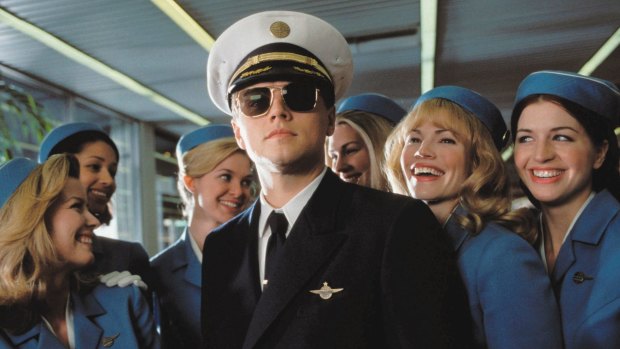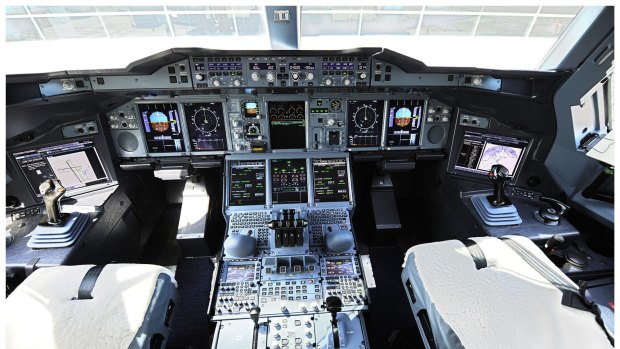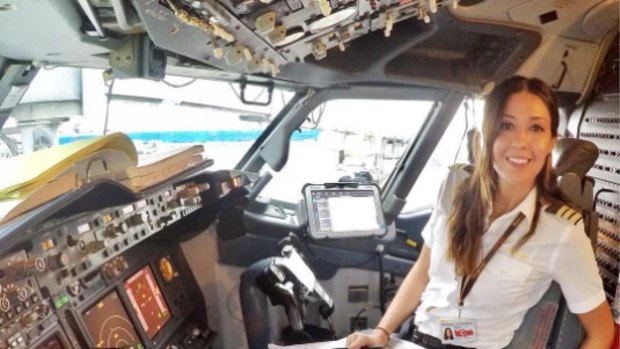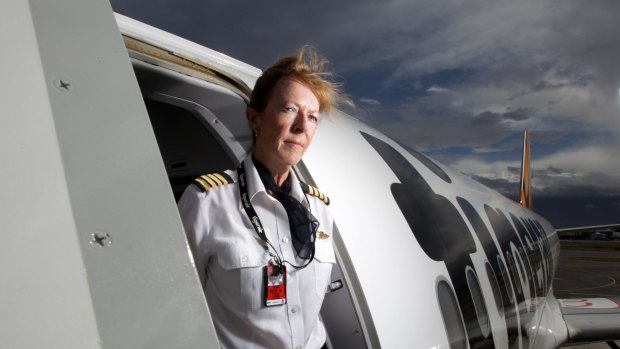This was published 6 years ago
Tips on how to become a commercial airline pilot: How much airline pilots get paid
By Michael Gebicki

Jobs with a major airline are the flight path to the big time.
There's something about a man or woman in uniform, and airline pilots cut a dash when they stalk through the terminal in their smart navy get-up. You might even find yourself wondering just what the cockpit job is worth? Is there a zillion-dollar salary to go along with the natty tailoring and the gold braid?
According to Australia's Fair Work Ombudsman, the minimum award rate for pilots on larger commercial aircraft varies from $77,189 for a first officer on a Fokker 28 to $171,317 for a captain on a wide-bodied twin-deck aircraft, the largest aircraft in the skies. In the real world, what pilots take home is a lot higher than that.
See also: Female pilot's glamorous life becomes an Instagram hit
Back in 2011, at the time of the Qantas industrial disputes which led to the grounding of the entire fleet, it was reported that some of the airline's pilots were taking home over $500,000 per annum, way more than the prime minister at the time.
Starting base salary for a captain with a Middle Eastern airline is around $180,000. On top of that is a raft of top-ups, such as flight duty allowance for every flying hour, an hourly meal allowance during layovers, housing allowance – which can be around $60,000 per annum – plus an education allowance for any children. Contract completion bonuses, annual bonuses and annual pay increments are standard, and the package is most likely tax free.
Jobs with a major airline are the flight path to the big time, but it's a rough road. First rung on the ladder with an airline such as Qantas is likely to be a trainee second officer, and that takes dedication. Minimum recruitment criteria for a Qantas pilot include a bachelor degree in aviation, science, maths or engineering, a pilot licence with at least 500 hours in command of a powered fixed-wing aircraft or 300 hours in command of a twin-engine aircraft.

Credit: Craig Abraham
Getting those hours is tough, usually requiring employment with a regional airline. Most of the entry-level jobs are in remote locations in the Top End or mining sites in the north of Western Australia and Queensland, or even in Papua New Guinea or the outer islands of Indonesia. For a look at the truly terrifying flying conditions that novice pilots face in Indonesia's Papua Province, search for "Worst Place to be a Pilot" on YouTube.
Another path to becoming a commercial airline pilot is via the military. Airlines actively recruit military pilots, and since it can cost many millions of dollars to train a RAAF pilot, that's a sweet cost saving for the airlines. As well as Australia's airlines, the aviation boom in China has sparked a demand for qualified pilots, with RAAF pilots among those in the cross-hairs. The bait is huge salaries, between $300,000 to $400,000 per annum, tax free, with promises to relocate and offers of rapid promotion to full captain status.
See also: Why are there so few female pilots?
Some airlines operate cadet pilot programs, under which airlines select and train the candidates they want under their wing from the start of their careers. Candidates get flying training, support and experience all the way through and a job in the cockpit waiting at the end. Qantas has offered cadetships at various times in the past although not at the moment but Virgin Australia does have a pilot cadetship program, although the current intake is now full.
Qantas is actively recruiting pilots at the moment, for the first time in several years. The Careers page on the Qantas website features a woman in pilot's uniform. While the cockpit is still overwhelmingly a male domain, reports suggest that the national carrier has its eyes set on levelling the gender balance.

In the booming world of air travel the Asian and Middle Eastern carriers are the most active recruiters, promising a fast track to wide-body commands for successful candidates, with low to zero taxes and housing and living allowances to further sweeten the deal.
While times are good for pilots right now, the airline industry is subject to the vagaries of the market, and there are big forces in play. In the immediate aftermath of 9/11, American Airlines laid off 7,000 employees. Over the next two years the airline shed more than 30,000 jobs, a 25 per cent reduction in its workforce that included many pilots.

Credit: Janie Barrett
When the chips are down, loyalty and past performance don't count for much. Just a month after he landed his US Airways Airbus A320 on New York's Hudson River when both engines failed following a bird strike, saving the lives of all on board, Captain Chesley "Sully" Sullenberger testified before the US House of Representatives that his salary had been cut by 40 per cent. He also noted airlines were "under pressure to hire people with less experience. Their salaries are so low that people with greater experience will not take those jobs. We have some carriers that have hired some pilots with only a few hundred hours of experience." A year later he flew for the last time as a commercial airline pilot, followed by a stint as an aviation safety consultant.
See also: Meet the world's youngest female captain of a Boeing 777
Sign up for the Traveller newsletter
The latest travel news, tips and inspiration delivered to your inbox. Sign up now.